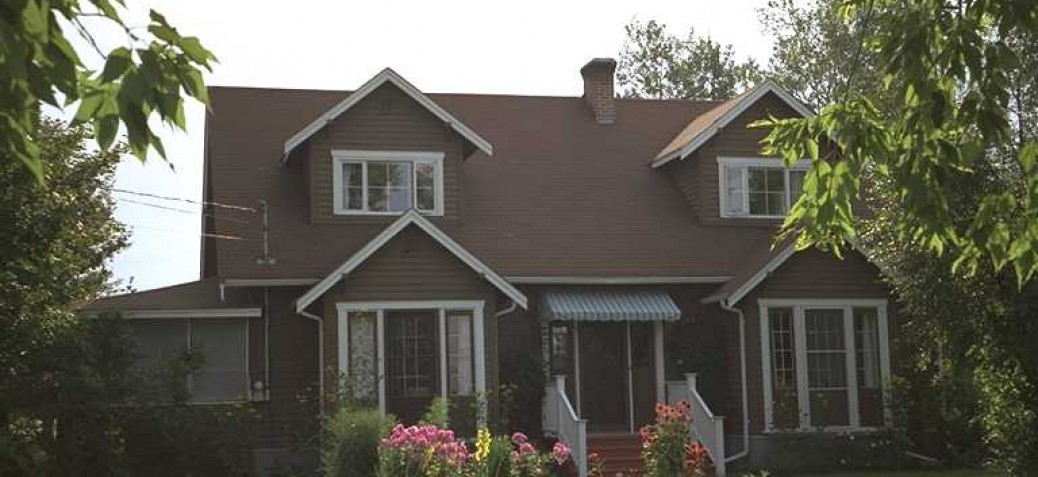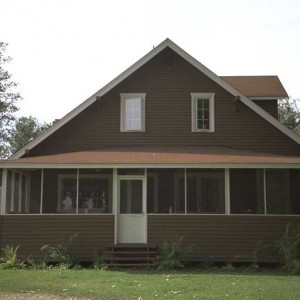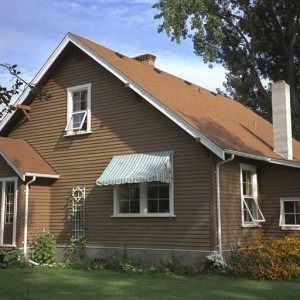Thomson Farm House
Place Description
The historic place is the 1.5-storey wood-frame residential structure, built in 1922 at 4193 Gordon Drive in Kelowna's Mission Sector.
Heritage Value
This early-1920s farmhouse represents the agricultural heritage of a farming family whose roots in this area go back to 1892. The changes of crops over the years reflect the area's changing agricultural conditions.
The house stands on the third farm in the Kelowna area owned by the family of Gifford R. Thomson. Originally from the Shetland Islands of Scotland, Thomson came to Benvoulin in 1892 with his wife and eight children (a last, ninth, child was born shortly after they arrived). He bought this property in 1898, gradually clearing it and growing hay. Gifford's two sons, Wilberforce ('Wilber') and John ('Jock'), took over the 120-acre farm when their father moved to Vancouver, adding 60 acres to the original 120 acres shortly after their return from service in the First World War. Theirs was a mixed farm. In the 1920s they tried tobacco, then being promoted in Kelowna as a lucrative cash crop (see their tobacco barn at 4193B Gordon Drive). In 1932 they started growing celery, head lettuce, and other vegetables. In the late 1930s they operated the vegetable business in partnership with J.B. Knowles, Kelowna's pioneer jeweler (see 369-371 and 865 Bernard Avenue), as Okanagan Mission Producers, sending vegetables to the Prairies by the boxcar-load and by truck.
Their father, Gifford Thomson, originally bought 20 acres of land from G.G. MacKay, the Benvoulin promoter, but the fruit trees he planted did not thrive because of the high water table. In order to make a living he drove the mail three times a week to Vernon. Around 1900 he pre-empted a property just south of Bellevue Creek, where he built a large house for his family and grew grain; after he sold it in 1904 the house became the well-known Bellevue Hotel. Gifford Thomson then moved to this property, further north, which he had purchased six years earlier. Shortly thereafter he moved to Vancouver, where his ventures included building the Gifford Hotel. With seven of the children being girls, the Thomsons contributed largely to the marriages and population growth of early Okanagan Mission.
The house was built by Wilber and Jock, for the former when he married in 1922. It has features of the American Colonial Revival style, with its steep roof, horizontal clapboard siding, casement windows, and dormers. Wilber's sons Gifford and Kenneth eventually took over operation of the family farm. The vegetable business ended in 1951 because refrigerated shipments of California produce made it uncompetitive. The Thomsons then shifted to dairy farming, shipping milk from their Holsteins through NOCA Dairy. In 1953, under the name Okanagan Nurseries, they started growing dwarf apple root stock to supply the orchard industry, which was beginning the shift to planting high-density orchards on dwarf trees.
After Gordon Drive was pushed through the site of their dairy barn in 1983, the brothers shifted to beef cattle. In the early 1990s they sold 80 acres to the City of Kelowna for park development and divided the remaining 40 acres of the original block between them. Gifford Thomson continues to live in this house, maintaining the continuity of occupation of the house and the long Thomson agricultural tradition.
Character Defining Elements
- 1.5-storey residence with features of the American Colonial Revival style
- Steep gabled roof and gabled dormers
- Projecting gabled bays on front elevation
- Large screened porch on left side
- Six- and eight-pane casement windows
- Horizontal wood beveled siding
- Corbelled brick chimney
- Large property with gardens, large poplar trees, grass, and open space






